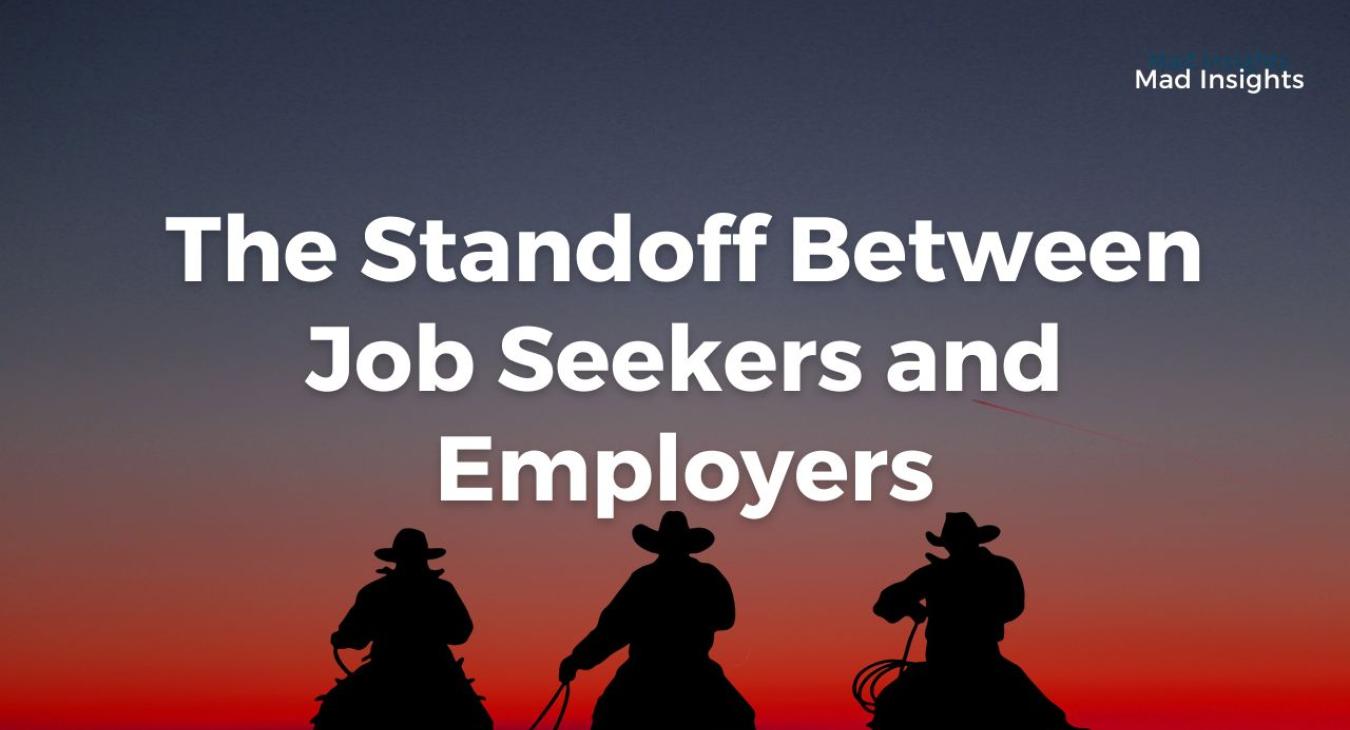The Standoff Between Job Seekers and Employers
Navigating the Job Market Standoff: Insights into the Current Labor Landscape and Strategies for Adaptation
In the ever-evolving landscape of the U.S. labor market, the recent release of the BLS Job Openings and Labor Turnover Summary has sent ripples through the employment sphere. The December 5th report reveals a notable decline in the labor market, with job openings plummeting to 8.7 million on the last business day of October. This downturn marks a significant shift, pushing job openings to their lowest point in over two years, echoing the undeniable signs of a cooling labor market.
The decrease from 9.4 million in September raises critical questions about the current dynamics shaping employment. For staffing professionals navigating these turbulent waters, this shift holds paramount. As the figures indicate a reluctance among employers to hire, it prompts a closer examination of the underlying factors and a consideration of how staffing companies can adapt to the cooler months.
Why are Employers so Reluctant to Hire?
Economic Uncertainty
Instability in the global economy, market fluctuations, and uncertain business forecasts have instilled caution in employers. Inflation, the fear of unforeseen challenges or another downturn may make them hesitant to increase their employee headcount. At the same time as this uncertainty, wage increase pressure is getting thrown into the mix, furthering employers' hesitation to take on new staff. For employers, high inflation puts upward pressure on wages and salaries as SHRM mentions in a recent article. Is your staffing firm taking inflation into account when laying out your pay strategy?
Cost Constraints
In a bid to optimize operational expenses, employers may be reluctant to expand their workforce. The need to control costs, especially during challenging economic times being compounded with uncertainty, may lead organizations to prioritize efficiency over immediate hiring.
As mentioned, as wages rise, employers may be forced to increase the amount they spend in order to hire and train new employees. If employers have to pay more for new hires, some may be more likely to hold off as detailed in a recent Business Insider post.
Remote Work
The pandemic initiated a widespread transition toward remote work, compelling employers to reconsider their organizational structures and contemplate the feasibility of remote and hybrid work arrangements. This transformation has added a new layer of intricacy to the hiring process, prompting employers to reevaluate their hiring strategies and adjust to the evolving landscape.
In a recent monumental shift, employers are now anticipating a return to the traditional office setting by 2024. A leadership study conducted by Forbes highlights that nine out of 10 companies are poised to have their workforce back in the office by 2024. This anticipated return signifies a significant change in the work environment, urging organizations to prepare for the forthcoming shift in workplace dynamics.
The Phenomena of "Quiet Quitting" and "Quiet Hiring"
If you’ve been keeping up with us here on MadInsights, you’ve heard us mention quiet hiring and firing. Although these phenomena are currently taking a back seat, animosity persists on either side. It appears that work-life balance remains the top priority, as employers navigate the delicate balance between respecting the request of their employees and optimizing efficiency. These subtle shifts in employees' behavior and employers' practices have further complicated the job market.
Quiet Hiring plays into the essential "standoff" as employers are discovering that, instead of hiring additional staff, they can gradually increase the responsibilities of their existing employees, thereby cutting costs and minimizing hiring efforts.
As we've discussed in our “How to Recruit Quiet Quitters” post, this becomes a vicious cycle. Employees are no longer interested in staying in a role, much less applying for one in which they feel easily replaceable and undervalued as individuals. Thus, a standoff characterizes the current workplace.
So, where do we go from here?
To overcome the stand-off between job seekers and employers and promote positive outcomes for both parties, certain steps can be taken:
1. Networking and Relationship Building
Job seekers should leverage their professional networks, stay active on job platforms, and engage with industry communities. Building relationships and actively seeking out opportunities can help job seekers stay informed and increase their chances of finding suitable employment.
According to a 2022 Hubspot survey, 42% of professionals found their current jobs through some form or effect of networking
If you’re looking for networking opportunities, SHRM is well known for hosting frequent events with other professionals in your field.
2. Reengage Old Conversations
Open dialogue between employers and job seekers can help alleviate concerns and foster understanding. Employers should communicate their needs, expectations, and future plans clearly, while job seekers can express their aspirations, skills, and potential contributions. A phone call never hurts. Make it a goal to reconnect with old candidates or hiring managers quarterly!
3. Job Fairs, Virtual or In-Person
An oldie but a goodie… Job fairs give people the ability to go beyond interview style conversation and meet employers and staff in a more casual setting. This provides an opportunity to better understand what the candidate is like and get a feel if they are a good fit. The value of in person connection is not lost. Go beyond the resume and get to know the individual.
Looking for more staffing industry news? Sign up for blog updates here!
Read more articles
- Log in to post comments



